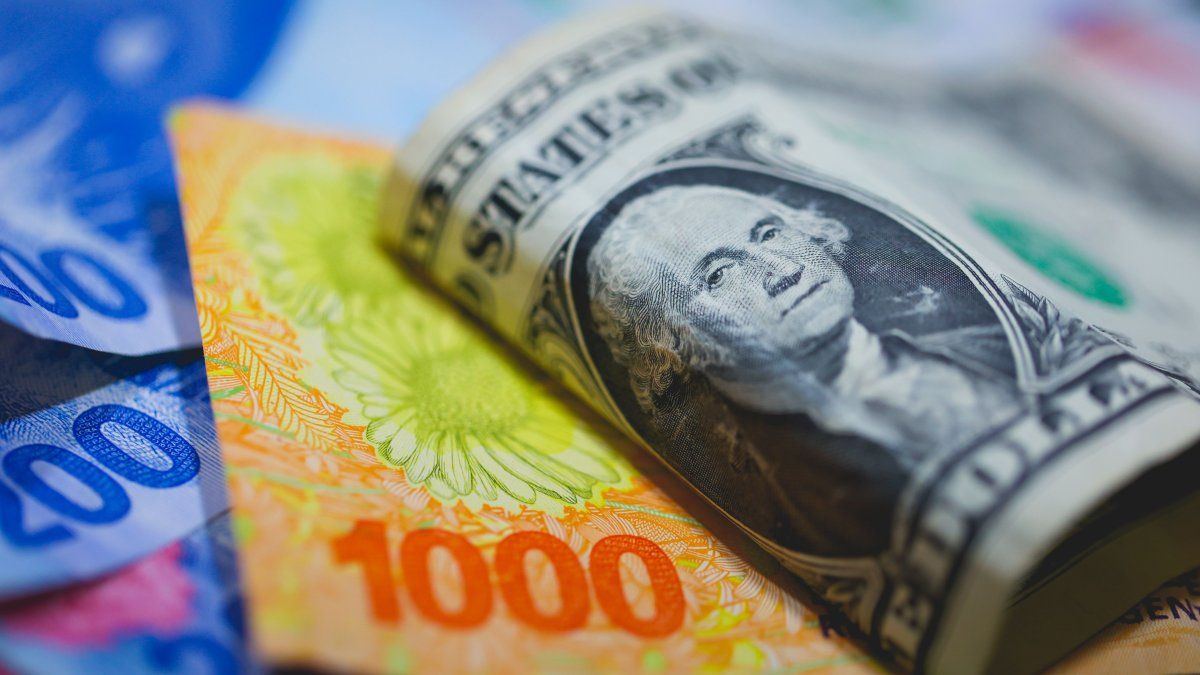Last Friday, Javier Milei and Cristina Fernández de Kirchner had an exchange on the X network. The discussion arose in front of the document published by the former president, under the title “It’s the bimonetary economy, stupid”, which points out the failure of this government in parts for ignoring the central weight that dollars occupy.
Along these lines, this week my first book “Driving capital. State or market, a false dichotomy” by Ediciones Continente, it has a prologue by Cristina Fernández de Kirchner herself and addresses the topic of the bimonetary economy among others. That is why I am sharing here a preview of it:
“Let’s go back to CFK’s phrase, what does it mean that we live in a bimonetary economy? To answer this question, first, let’s see what the essential functions of a currency are, which in their most basic definition are three:
– Unit of account: This means that it can reflect the price of goods and services. It is the simplest feature, since it is a convention regarding the reference that we are going to use in our transactions. In modern societies, fiduciary money (from the Latin fiducia, trust, that is, without backing in any good) is the unit of account used by all States. This means that I can express the value of something in currency units (How many currency units does a kilo of bread cost today?).
– Payment method: Once the State has defined what the unit of account will be, it grants that currency the property of being a means of payment. This means that we will all be willing to accept it to carry out our transactions, both buying and selling, paying our salaries, etc. The State guarantees that this will be the case because it is in that currency that it will also collect taxes.
– Store of value: money must be able to retain its value over time, which allows it to be hoarded and continue to be accepted as a unit of account and means of payment. This function is important because it allows consumption decisions to be deferred over time. For example, setting aside a portion of your salary each month to buy a television or a cell phone at the end of the year.
The history of money is very interesting: we went from using salt or cows as currency, then we went to gold and silver to finally arrive at money as we know it today. When currency emerged as a facilitator of exchange, then came the discussion of who printed it and how. To give us an idea, there is a record of the first coin appearing in the year 600 BC in ancient Greece, in the kingdom of Lydia, although others maintain that it was in China in the 7th century BC. Thus, where trade flourished, gold, silver or copper minted currency appeared as a facilitator of this.
But nowadays there is no asset to back up money, that is why we speak of fiduciary money (when you have a dollar in your hand read the front “In God we trust”). Its origin and evolution also gave rise to different theories about money and currency. In particular, we will focus on two approaches, the metallist and the chartist. How money is introduced into economic analysis is one of the main differences between orthodox and heterodox economists (Rochon et al., 2003).
Now that we have a clearer understanding of the functions of money and the theories that attempt to explain its origin and imposition, we must think about what happens in a bimonetary economy. First, the definitionBasically, it arises when within a country, beyond the national currency, there is another currency in circulation that also meets the conditions we previously indicated: it is a means of payment, unit of account and reserve of value. In some countries this phenomenon occurred with multiple currencies (Capanelli, Menon, et al., 2009) and is closely related to crisis situations or changes in macroeconomic regimes (for example, towards the end of the Soviet Union). The negative aspects of multi-currency exchange rates include the loss of effectiveness of monetary and exchange rate policy. This means that governments have less independence in implementing their economic programs.
In our country, bimonetarism is de facto. And due to the government of La Libertad Avanza, which began in December 2023, it will be to be de jure, by law, in some sectors in which dollarized contracts are authorized. The most notable is the real estate sector, in which President Milei explicitly authorized it to be in dollars in his presidential decrees. As Gaggero and Nemiña (2013) point out, the purchase and sale of properties in dollars began in the 1970s and was strengthened in the 1980s based on three factors:
– repeated currency crises and high levels of inflation;
– the exchange rate liberalization imposed by the civil-military dictatorship, and
– the dismantling of real estate market regulation.
That is to say, the constant high inflation and the recurrent jumps in the dollar exchange rate have generated per se the incentives to seek refuge outside the peso. To put it in perspective, between 1975 and 1991 the inflation rate remained above 100% annually, except in 1986 when it reached 90%, after a failed stabilization attempt. From then on and well into the Menem government, the variation in prices will show high volatility, including two hyperinflationary peaks. The weakness of the national currency would then leverage the demand for dollars, which was often acquired through the process of external indebtedness (private and public) and a formation of external assets (in the “flight” neighborhood) that would become endemic.
To put it simply, the problem with the bimonetary economy is that we cannot use the peso to save, invest and leverage the growth of our economy, and this is because the macroeconomic imbalances in the last 75 years led to inflationary processes that have made us lose confidence in the peso.”
The failure to find a solution to the problem of the bimonetary economy leaves national governments with ever greater weaknesses. The State is seen as incapable of solving fundamental problems: price imbalances, lack of foreign investment, public financing problems, among others. That is why one of the paragraphs that CFK provides in her letter is so important:
“Addressing the problem of the bimonetary economy and its corollary, the lack of a strong currency, is what should mobilize the political and social forces that continue to believe in the Nation. However, When anti-politics runs out of answers due to the failure of extravagant theories that only cause hatred and pain, we will not only have to rebuild the currency, but also politics..”
Economist and teacher. Director of Banco Ciudad.
Source: Ambito
I am a 24-year-old writer and journalist who has been working in the news industry for the past two years. I write primarily about market news, so if you’re looking for insights into what’s going on in the stock market or economic indicators, you’ve come to the right place. I also dabble in writing articles on lifestyle trends and pop culture news.




